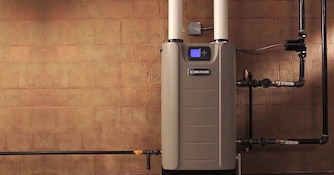
Hot Water Heating 101
Many households, businesses, and facilities rely on a hot water boiler for heating during the winter. Understanding what a boiler is and how it works can, therefore, be very important in preventing issues when you need heat the most.
In this article, we’ll talk about the various parts of a boiler system and how they all work together to bring comfort to your home, office, or other building structure. While we’re at it, we’ll throw in a few tips on how you can increase energy efficiency and save some money!
What is a Boiler?
A boiler is a closed tank in which water is heated under pressure. This pressure is created by the mere fact that the tank is completely closed and is helpful for easing pumping and driving up temperatures.
How does a hot tank of pressurized water help heat our homes and businesses? To answer that, let’s explore what other parts there are in a boiler and how they work together to create a complete heating system.
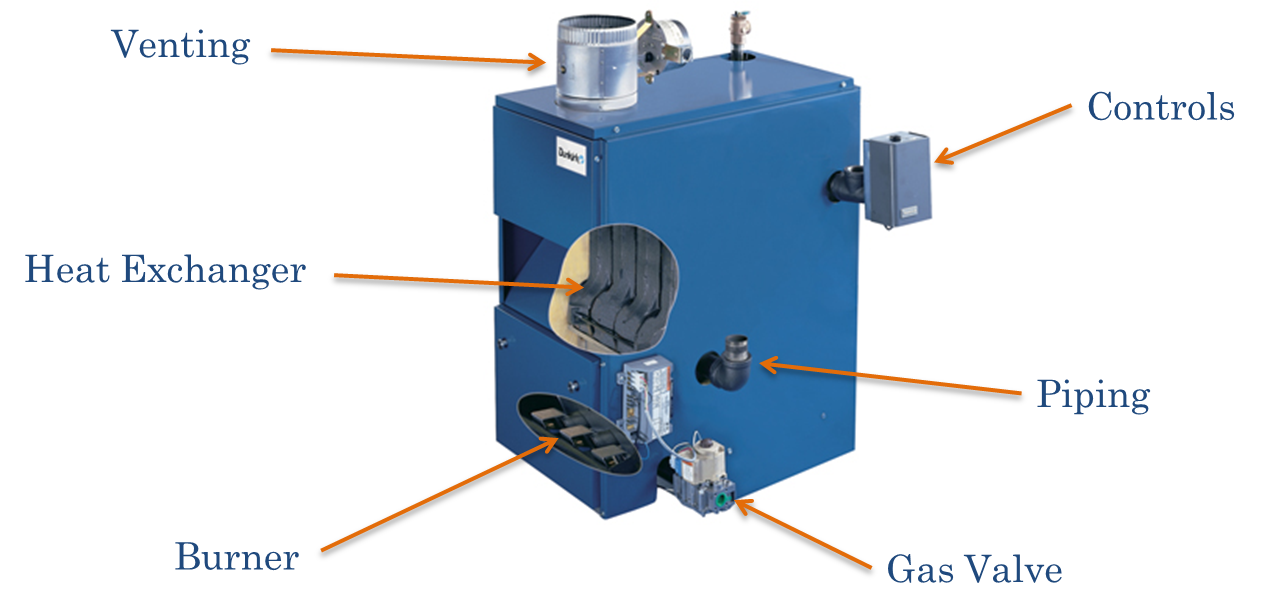
Boiler Fuel
In order to heat the water, we need a fuel source. The flow of that fuel source will typically be controlled by a valve (the above picture is of a gas boiler, so it has a gas valve).
The fuel is then burned by the burner, which controls the amount of air mixed with the fuel to maximize the efficiency of the combustion. The hot gases produced from the fuel burning are then sent through a heat exchanger, which transfers heat from the gases to the water in the tank.
Depending on the type of boiler, that water might turn into steam or just remain as hot water, but we’ll get to that in a minute. After heating the water, the combustion gases are then vented out of the building using a chimney or other venting system. If the venting system is not properly designed, installed, and maintained, it may cause carbon monoxide to build up in the home or be a fire hazard.
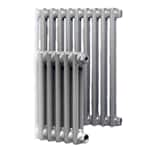 Heat Distribution
Heat Distribution
Meanwhile, the hot water or steam travels through a piping and radiator system to deliver heat to where it is needed and then makes its way back to begin the process again.
In addition to these parts, every boiler has external controls that can be used to manually or automatically regulate temperature and maximize efficiency. Soon, we’ll talk about how these controls can save you a good deal of money, especially in climates where the temperature likes to fluctuate.
Steam Heat
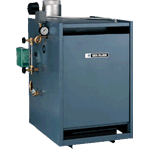 As mentioned above, there are two ways that a boiler can deliver heat. One way is to heat the water in the boiler until it boils, creating hot steam.
As mentioned above, there are two ways that a boiler can deliver heat. One way is to heat the water in the boiler until it boils, creating hot steam.
Since steam is lighter than air, it rises without any mechanical assistance to the highest point in the system, usually a radiator. The radiator acts as a heat exchanger, and the steam gives off its heat to the surrounding air and condenses back to water (see our heat pump article for details on this heat exchanging process).
Since this water is heavier than the steam surrounding it, it falls through the piping system back to the boiler, where it is heated until it turns into steam and begins to rise again.
Hydronic Heat
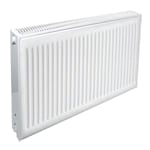 Another way to deliver heat is to heat water up to a selected temperature below its boiling point and send the hot water itself to hydronic radiators around the building.
Another way to deliver heat is to heat water up to a selected temperature below its boiling point and send the hot water itself to hydronic radiators around the building.
Because hot water will only rise very slowly, this type of delivery system requires a pump to circulate the water from the boiler to the radiators. As in steam delivery boilers, once the water has given its heat to the air, it returns to the boiler to be heated again.
Maintaining Efficiency
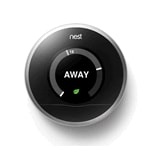 With a solid, basic understanding of how a boiler system works, let’s talk about how you can manage the efficiency of your boiler.
With a solid, basic understanding of how a boiler system works, let’s talk about how you can manage the efficiency of your boiler.
One way is by making sure that you are only producing the amount of heat that you need and not more. Some boilers only have one stage, meaning they are either off or firing at full power.
Other boilers, though, have multiple firing stages, which are controlled by your thermostat. When your thermostat determines that less heat is needed to reach a desired indoor temperature, the boiler will only fire at partial power.
When you need more heat, the boiler will boost its firing rate to the next stage, and so on, until the boiler is eventually firing at 100% power. While staging boilers have only a few discrete firing levels, modulating boilers allow for the adjustment of firing rate on a continuous scale for even more efficiency.
The range of the scale is predetermined and typically not all-inclusive, but modulating boilers allow you to more finely tune the output of your boiler to match the needs of your home.
Outdoor Reset Control
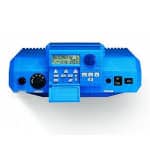 One way to further match a boiler’s output to actual conditions and increase efficiency is through the use of an outdoor reset control.
One way to further match a boiler’s output to actual conditions and increase efficiency is through the use of an outdoor reset control.
Both staging and modulating boilers will adjust their firing rate based on the current and desired indoor temperature, as described above. Outdoor reset controls add one more important piece of information to the equation – the outdoor temperature.
It will take less energy to heat a space by a given amount if it’s warm outside than if it’s cold outside. To take advantage of this, an outdoor reset control selects the lowest possible water temperature necessary to deliver just the amount of heat needed for your building.
The colder the water leaving (and therefore returning) to a boiler, the more efficiently it is able to operate. In fact, outdoor reset controls can save you about 10% per year on energy costs. Considering that they are simple to add to your existing boiler, making your boiler smarter with an outdoor reset control is almost a no-brainer!
Condensing Boilers
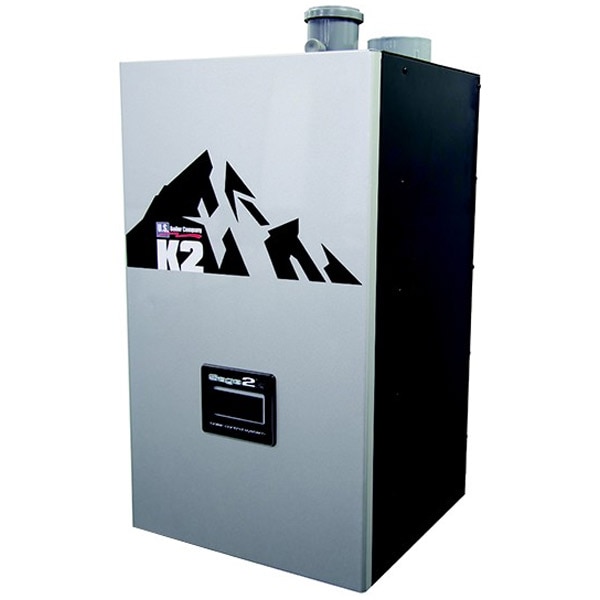 If you’re looking into getting a new boiler, condensing boilers are often the best choice. Some even include an outdoor reset control as a standard feature, which is, of course, a great benefit.
If you’re looking into getting a new boiler, condensing boilers are often the best choice. Some even include an outdoor reset control as a standard feature, which is, of course, a great benefit.
When boilers burn fuel, the combustion releases gases including water vapor. Conventional boilers pass the gases and vapor through the heat exchanger and then release it all through a vent.
Condensing boilers capture the vapor before it escapes, condense it back to water, and use the latent heat from that phase-change to support the heating process. While they may cost more than conventional boilers, condensing boilers can save you another 10% in energy spending each year.
Keep in mind that some condensing boilers feature an outdoor reset control, which saves you another 10%, totaling 20% savings in energy spending. Who wouldn't make the change?
The improvement in efficiency and savings is well worth it. So, get your boiler checked by a technician to make sure it’s safe enough to make it through the winter. If you need to replace it, look into investing in a condensing boiler to save up to 20% on your energy bill.


